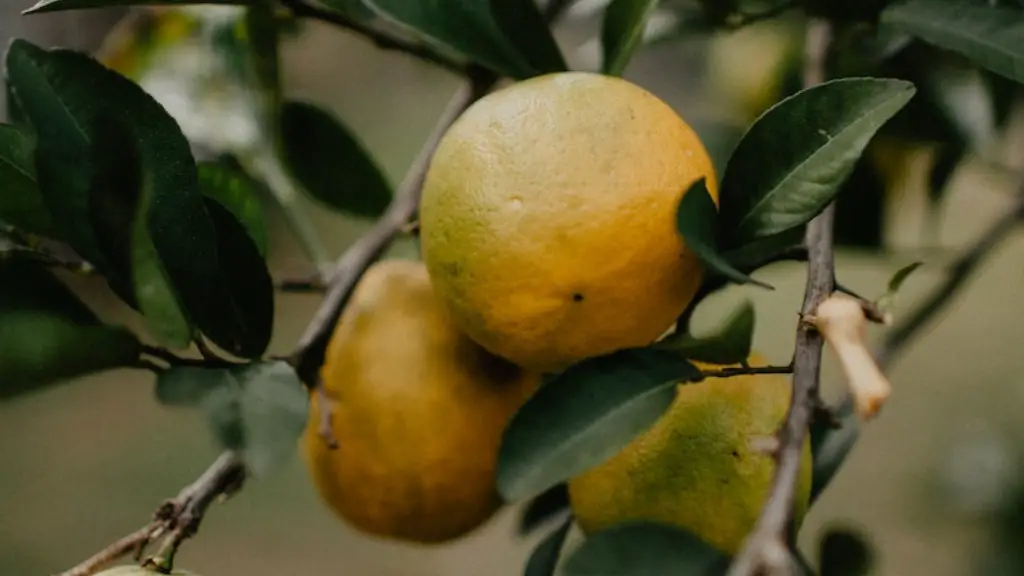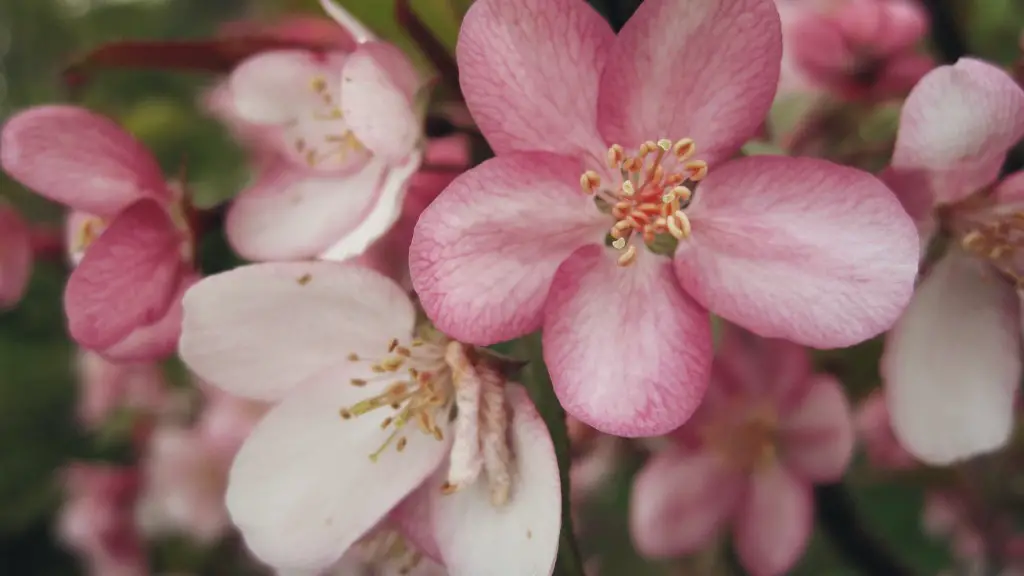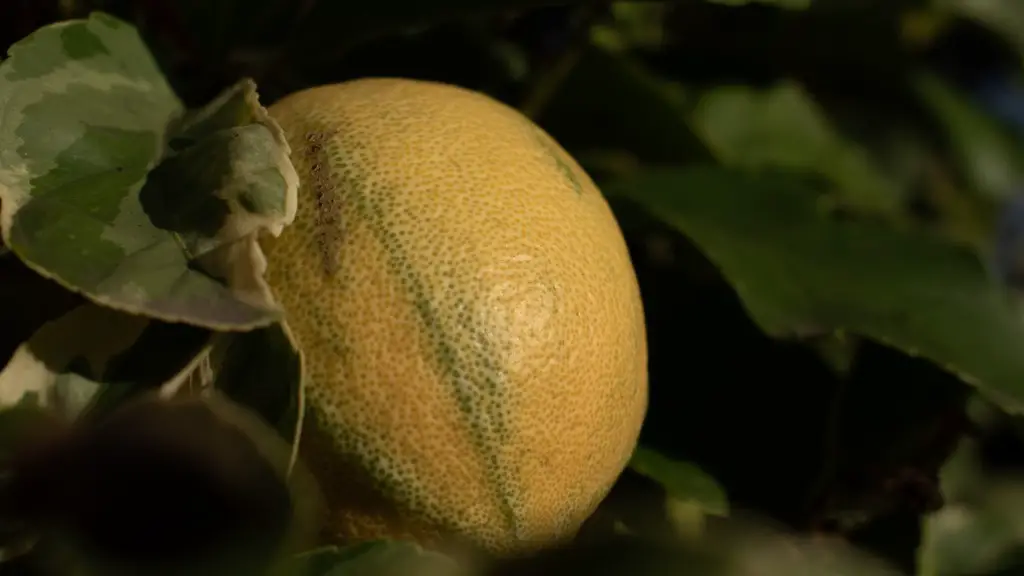When it comes to caring for lemon trees, many people are unaware of the amount of water that is necessary for the optimal health and growth of the tree. Good soil quality, sunlight, and proper watering are all essential ingredients for the healthy growth of a lemon tree. Depending on the type of tree and the climate of the region, the amount of water a lemon tree needs can vary.
In general, lemon trees require at least five to six gallons of water every week. Watering the tree more frequently in hot weather, or during periods of extended drought, may be necessary to keep the tree healthy. During dry months, the lemon tree might need more water to avoid drought-stressed fruit production and leaf burn from dehydration.
It is important to keep in mind that the water needs of the lemon tree can vary according to the type of tree, soil, weather patterns and the area in which it is planted. For example, a young lemon tree planted in a warm and dry region may need a significant amount of water every week. However, a mature tree planted in a cooler region may only require 2 to 3 gallons per week.
In order to determine the exact amount of water to give a particular lemon tree, it is important to monitor the tree’s moisture levels through its leaves and roots. If the tree shows signs of wilting or browning leaves, then it may be time to water the tree. Additionally, the soil around the tree should be consistently moist, but not too wet. The best way to achieve this is by using a moisture meter.
When it comes to water quality, it is best to use water that is untreated, such as rainwater or purified water. The pH level of the water should also be monitored to ensure it is suitable for the tree. Too much fertilizer, salt or other chemicals in water can damage the roots and leaves, leading to the death of the tree.
The watering regime for a lemon tree must be carefully monitored to ensure its health and productivity. The climate of the region, the tree’s age and water quality should all be considered when deciding on the amount of water a particular tree needs. It is important to ensure that the tree receives adequate water every week to promote a healthy growing environment and prevent fruit production or leaf burn.
Soil type
The type of soil used can also have an effect on the water needs of a lemon tree. Sandy soils, for example, tend to not retain moisture as well as heavier soils, such as clay. If sandy soils are used, the lemon tree may need more frequent watering, since the soil will not hold moisture for a long period of time. On the other hand, heavier soils can retain water for a greater length of time and the amount of water given to the tree might need to be reduced.
When planting a lemon tree, it is important to use soil that has good drainage capabilities, as poor drainage can also lead to root damage and can prevent the soil from absorbing enough water. Soil additives, such as mulch or perlite, can also be used to improve the quality of the soil and can help absorb and retain moisture.
The pH level of the soil must also be monitored to ensure the health of the tree. Lemon trees require slightly acidic soil, with a pH level of 6 to 7. Too high or too low a pH level can interfere with the absorption of essential nutrients, leading to poor growth or die-back of the tree.
Fertilisers & Nutrients
Fertilisers and nutrients are also important for the healthy growth of a lemon tree. Lemon trees should be fertilised approximately once a month during the warmer months, and less often during the colder months. A balanced fertiliser containing nitrogen, phosphorus, and potassium should be used and according to the product’s label.
In addition to fertiliser, the lemon tree may need a foliar feed, or a fertilizer that is applied directly to the leaves, once or twice a year to ensure the tree receives the necessary nutrients. Foliar feeds are important because they deliver nutrients directly to the site of the tree’s growth and can aid in the production of healthy fruit.
Organic fertilisers and soils can also be used to fertilise the lemon tree, as these materials contain natural forms of nutrients and can help improve soil health and structure, as well as provide essential nutrients for the tree. Organic fertilisers can also help to conserve water, as they improve the soil’s ability to absorb and retain water, reducing the amount of water that needs to be given to the tree.
Pruning and Protection from Frost
In addition to water and nutrient management, lemon trees require regular pruning to help keep their shape and promote fruit production. Pruning helps to reduce the amount of foliage, allowing more sunlight and air to reach the tree and promoting healthier, more productive growth. Pruning should be done in the spring and should be kept to a minimum so as not to damage the tree.
Lemon trees can also be susceptible to frost, especially in cooler regions. To protect the tree from frost, it is best to not prune or water during periods when frost is predicted. If frost does occur, it is recommended to cover the tree or move it to a warmer, sheltered location.
Pests & Diseases
When it comes to lemon trees, it is important to keep an eye out for pests and diseases that can affect the tree’s growth. Common pests that can affect lemon trees include scale and mealybugs. To keep these pests from affecting the tree, it is important to spray the tree with an appropriate pesticide.
In addition to pests, various diseases can affect lemon trees, such as citrus blight and citrus canker. It is important to identify these diseases quickly and to take steps to treat them, as ignoring them can quickly lead to the death of the tree. If the tree does become diseased, it is best to consult a professional for advice on how to treat the tree.
General Care
General care is also important for the health of a lemon tree. It is important to monitor the tree’s soil, pests and diseases, and to take the necessary steps to ensure these issues are managed so that the tree can reach optimal health. Pruning and protection from frost are also important and should be kept in mind when caring for a lemon tree.
When it comes to watering a lemon tree, it is important to monitor the tree’s soil and moisture levels to ensure it is receiving the optimal amount of water. Depending on the tree’s age, type, and climate, the amount of water needed can vary. It is also important to use untreated, pH-balanced water to protect the tree’s roots and leaves.
Overall, proper care and management are essential for the healthy growth of a lemon tree. Careful observation and monitoring of the tree’s water, nutrients, soil, and pests and diseases, as well as regular pruning and protecting the tree from frost, are all important steps to keep the tree healthy and to ensure good fruit production.



